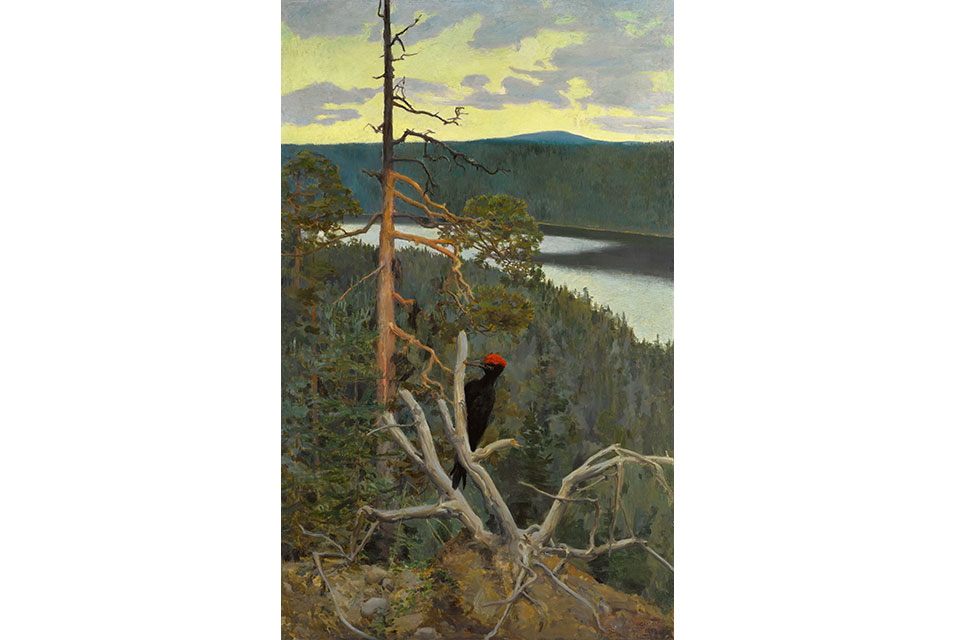Musee dOrsay acquires Gallen-Kallela masterpiece in Sothebys private sale

Artdaily_NEW YORK, NY.- Sotheby’s announced that Finnish artist Akseli Gallen-Kallela's masterpiece Palokärki (Great Black Woodpecker or Wilderness) was acquired in a private sale by the Musée d'Orsay in France. The painting will now be part of the Musée's permanent collection, alongside other masters of the nineteenth and twentieth century, including Pierre-Auguste Renoir, Claude Monet, Edgar Manet, Vincent van Gogh, Edgar Degas, and many others.
Simon Shaw, Vice Chairman of Sotheby’s Global Fine Art Division, remarked: "We are thrilled that this extraordinary painting will join the collection of the Musée d’Orsay. There, Akseli Gallen-Kallela will be shown rightfully among the finest of nineteenth century masters. This acquisition follows the purchase, in 1999, of Gallen-Kallela’s Lake Keitele by the National Gallery in London and underscores Sotheby’s enthusiastic commitment to Nordic art."
Palokärki (Great Black Woodpecker or Wilderness)
A masterpiece of Finnish art, the bold, enigmatic and sublime landscape, highlighted by the stark contrast of the woodpecker’s deep black plumage and red crown of feathers, fuses two of the greatest art movements of the late 19th century: French Realism and the burgeoning Nordic Landscape movement. Painted between 1892 and 1894, the painting is the first by Gallen-Kallela to combine his prior adherence to Realism and his clear but occasionally dispassionate representation of nature, with a growing perception of landscape as an evocation of emotional meaning. Partly inspired by National Romanticism, a strain of Symbolism that took hold in the Nordic countries in the 1890s, Gallen-Kallela painted the woodpecker to further mark this shift in attitude, as he painted two additional works in the same time period that articulated this change of conception of landscape as a metaphor for mythology and folklore with distinctly political subtext.
In summer of 1892, Gallen-Kallela travelled to Lake Paanajärvi, then in northeastern Finland and now just beyond the Russian border. Along the banks of the fjordlike lake, Gallen-Kallela began painting Palokärki, completing this oil in his studio in either Helsinki or Sääksmäki by 1894.
Describing the inspiration for the painting and the symbolism of the woodpecker, Gallen-Kallela stated: “The woodpecker has always been my friend. Always when I listen to its fresh, piercing voice I get the feeling that I am so far from all the human habitation that there no longer is any contact—even if this occurs just around the corner from my home…The red spot is the individual’s cry for life in the quietude of the hinterlands.”
For Gallen-Kallela, the woodpecker was a symbol of Finnish patriotism, embodying his pride in the natural world he called home and a defiant resistance to “Russification,” a program of systematic attempts by Russian authorities to culturally assimilate the Finns prior to winning their independence in 1917.
Over 100 years later, the painting continues to reverberate with Gallen-Kallela’s call to the individual spirit and freedom embodied by the solitary woodpecker among the vast Finnish wilderness. Beyond the surface of its dispassionate representation of nature, the painting’s undertones of hard-fought political autonomy and national
independence make it a subversive masterwork of Finnish art and modern landscape painting.
